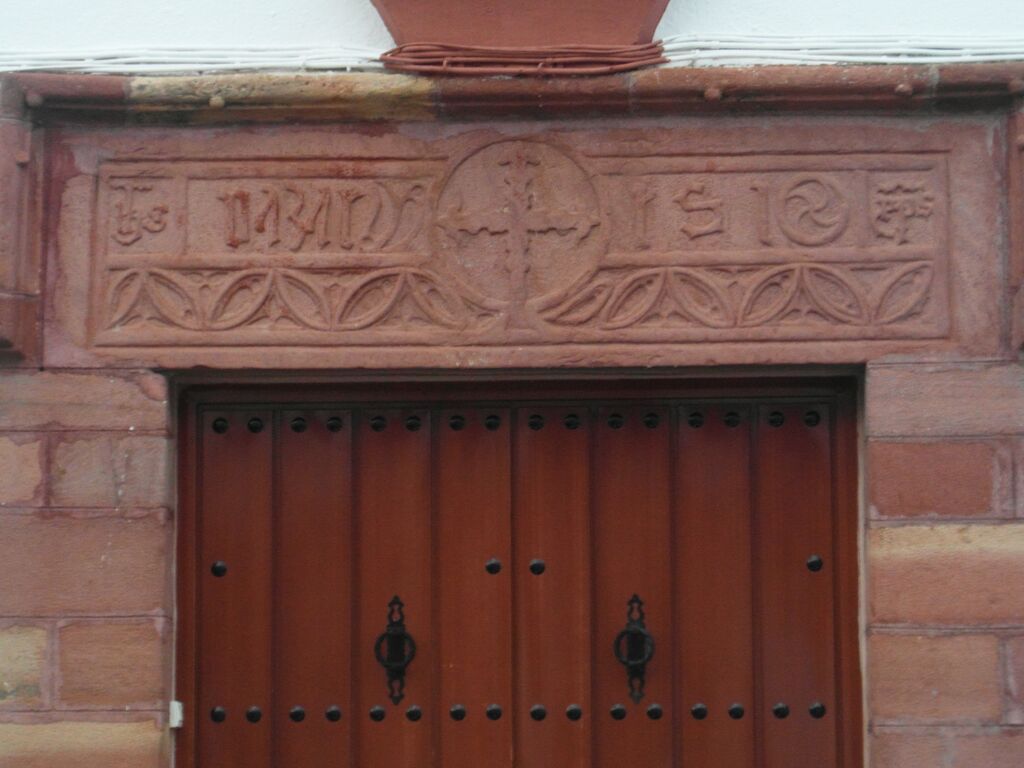


They are houses with front page worked in stone which lintel presents sometimes dates, inscriptions or religious symbols, which for lack of heraldries, satisfy somehow the zeal of reputation of his owners, without rejecting the fact that someone of these houses took as an origin some dedication of religious character. That of characters of major antiquity is the número 30 of the street Inns, his broad lintel has decoration and letters of Gothic type between those who stand out the year 1510.
The frequent type in the XVIth is of the not very high front page, with high lintel, framed by a moulding or simple strip, like arrabá, that goes down for the sides at a height of the lintel. In the centre, a cross in relief florenzada or flordelisada and always with artistic pretension. The smooth jambs of stone. Immediately on the lintel, a window is opened by grating almost always projection and that comes exactly up to the eaves of the roof. In the rest of the front, there are opened a few hollows, all of them in the shape of the window. The houses must distinguish numbers 40 and 50 of the street Inns, the latter dated in 1525, and the núm. 6 of the street Owners, dated in 1570. Already in the XVIIth, the symbols are suppressed apparently in inscriptions, as well as the arrabá and a divided front on appears on the lintel, well moldurado, that shelters the window. The top floor is in the habit of being already slightly higher. On the sides of the fronton, a few pyramidal pinnacles, in some case finished off with the ball. In the XVIIIth, some balcony appears instead of the window on the door. They are worth the houses being outlined num. 9 and 10 in the street of the Jail, 1 and 69 of the street Inns, 7 of the street the Source, 20 of the Reedy street, 3 and 13 of the Plaza of the Constitution.

0 Reviews